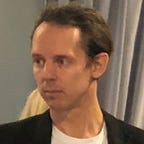Mapping Traffic Risk in Tallinn
We’ve collected more than ten thousand videos of traffic offences in Tallinn with the help of our community and we’re just getting started.
Supervaisor started its mission to save lives in traffic about a year ago and about six months ago, we got serious about collecting data. Here’s the very first look at the data we’ve captured. Every dot on this map is an actual recorded traffic offence with a video!
We think this is just amazing! To the best of our knowledge,
We are the first in the world to start capturing traffic risk like this on a mass scale.
Humans evolved to run around and be sensitive to damage we can cause moving around at those speeds. There has been no evolutionary pressure to hone our instincts and responses for moving around in 2 tonne metal boxes at 5–10x speeds.
We never evolved to preserve DNA in traffic!
Road death statistics make it clear that we as a society had to agree on rules and laws to limit the damage and keep us alive.
Historically the majority of learnings for both law enforcement and insurance companies have NOT come from the deviation from those rules, but from the worst consequences of not following them. The main data points signaled lives lost or property damaged, not the rules that were broken. It was always after the fact when something new was learned.
We think this is a big opportunity — an opportunity to learn from vastly larger amounts of data and use that to save lives. We’re finally getting set up to learn
- which traffic rules matter exactly how much
- what type of deviation from the rules results in what type of loss
- at what frequencies do those deviations matter
- enforcing what rules would have the maximum impact to saving lives
- how much do localized risk signals correlate with traffic loss
- what scale of enforcement would be optimal
- what are the opportunities for self-regulation etc.
There are so many more questions that we can both ask and start answering.
How do we as the community want to see the data used?
The problems that we can solve when we have scale are different from the problems we can solve when we don’t. It is us, the community, that decides what we can do together.
- Do we want commute risk scores for ourselves and our loved ones?
- Do we want to know when we’re approaching a dangerous intersection?
- Do we want to know when and where to commute to reduce risk?
or do we want to play “Traffic Tinder” and decide through a democratic process what evidence law enforcement should receive and process under their clearly defined role?
We do not yet know what are the best means to use this data to improve traffic safety, but there is no doubt in our minds that this data will be our best shot at figuring out what works and what doesn’t.
So lets figure it out together!
We’re going to start running small scale experiments, publishing more around what we can do with the data and engage the community more. Follow us on Facebook, Twitter or Medium here to be in the loop.
We need volume to start bringing back value to the community and it will take time before the data we all provide starts helping us all in our everyday lives. So until then we’re offering reduced insurance rates for those amazing people who help us collect data and figure out how to fix traffic! Our logic here is that
Those who notice others offending are likely to notice themselves offending
If you’re in Tallinn, Estonia and commute regularly, please consider joining our Traffic Improvement Program by filling out the form below.
We’re super thankful for all the people who have joined our mission to fix traffic and contributed data already. It is with your help that we will start chipping away on the constant and senseless loss of lives on our roads!
Silver Keskküla
founder and ceo
Supervaisor
